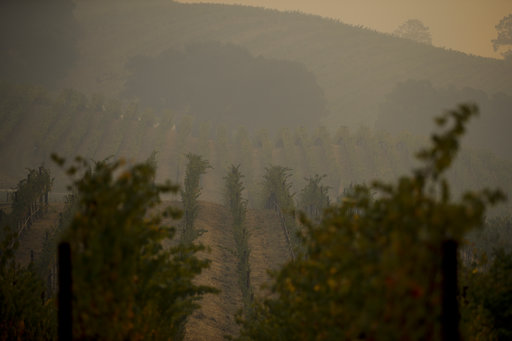Recent wildfires in California Wine Country, particularly those that devastated parts of Napa and Sonoma counties in October 2017, have focused attention on whether insurance covers smoke taint damage to grapes and wine.
Many wineries and grape growers have notified their insurers of possible smoke taint damage claims. However, smoke taint in certain cases may present itself only after some time following the smoke exposure has passed. As a result, there was uncertainty at the time some claims were made about whether there actually would be damage and, if so, whether insurers would cover it. Now that we are just over two years past the 2017 wildfires, it is a good time to review how this issue is developing.
Property insurers covering the wine industry often assert that they cover damage to “harvested grapes” or wine in process, but not damage to grapes while they are “on the vine.” Crop insurance is supposed to cover damage to the vines and grapes on them, though it often is limited in scope and amount. This distinction may seem simple enough at first glance, but reality often is not be confined so easily to cleanly drawn categories.
The October 2017 wildfires in Napa and Sonoma started and continued to burn around the time many wineries and growers had planned to harvest their grapes. Some were lucky and had completed their harvests before fires broke out.
Others not so. They were in midst of picking their grapes or had not yet started when the smoke appeared. Some rushed to complete their picking during the fires in the midst of heavy smoke.
For most of the grapes picked before the fires broke out, there should be no insurance issue. If there was no possibility that smoke touched the grapes until they were on the ground, in transit or in process, most insurance policies should cover the damage, even if the damage presents itself well after the fires were extinguished.
As to the other grapes, however, questions abound. The fires had started, but had the smoke arrived by the time they were picked? If so, how thick did the smoke become by the time they were picked, and could the smoke have caused damage to the grapes while they were on the vine?
Or did the thicker smoke arrive after they were picked? Could the smoke have damaged them both before and after they were picked?
In other words, insurers’ attempted clean lines of distinction can quickly become hazy when it comes to smoke taint. It can be unclear when the process of damage started. Even if the damage arguably started while the grapes were on the vine, and there are disputes over whether that is possible, it may be the case that any such damage was made worse by exposure to additional smoke after they were picked.
There is also a question of when the insured reasonably could have discovered any damage during this process. These kinds of questions have led to one lawsuit already. Kunde Enterprises, Inc. v. National Surety Corp. was filed in October 2019 and is pending in federal court in Oakland. Kunde alleges that its insurer wrongfully denied coverage for smoke taint damage arising out of the October 2017 wildfires. The insurer claims that some of the allegedly damaged grapes were exposed to smoke while they were on the vine. The parties presumably will have to dig deep into the factual issues above while litigating this case.
Wineries and grape growers that have potentially suffered smoke taint losses would be wise to painstakingly gather and analyze their insurance policies and the facts surrounding their particular situations.
Each claim will be unique. It’s critical to completely answer the questions above and others before decisions are made about whether to pursue claims and how such claims should be pursued. Further, wineries and growers should be vigilant in reviewing their policies each year to ensure that they obtain the broadest coverage possible. Some insurers surely will react to the recent spate of smoke-taint claims by adding new exclusions to their policies in an attempt to eliminate all coverage for them.
About the photo: Smoke generated by wildfires fills the air in a vineyard Thursday, Oct. 12, 2017, near Napa, Calif. Gusting winds and dry air forecast for Thursday could drive the next wave of devastating wildfires that are already well on their way to becoming the deadliest and most destructive in California history. (AP Photo/Jae C. Hong)
Was this article valuable?
Here are more articles you may enjoy.


 California Governor Seeks $200M to Replace EV Tax Credits Cut by Trump
California Governor Seeks $200M to Replace EV Tax Credits Cut by Trump  Singer’s Elliott Sued by PE Firm in Escalating Fight Over Money
Singer’s Elliott Sued by PE Firm in Escalating Fight Over Money  Tesla, EEOC Plan Talks to Settle Factory Racism Suit
Tesla, EEOC Plan Talks to Settle Factory Racism Suit  What The Return of California’s ‘Death Discount’ Means for Litigation
What The Return of California’s ‘Death Discount’ Means for Litigation 